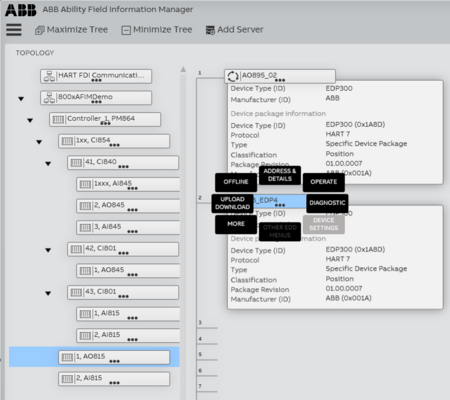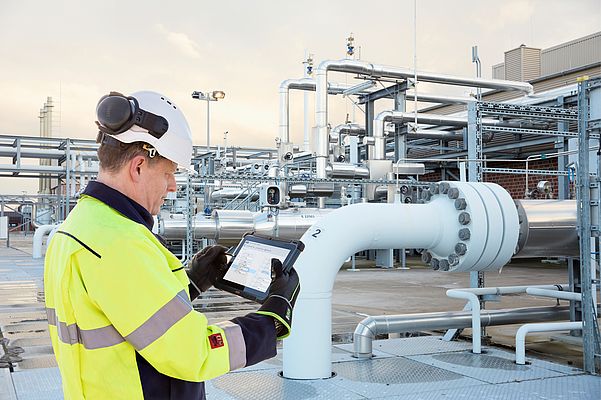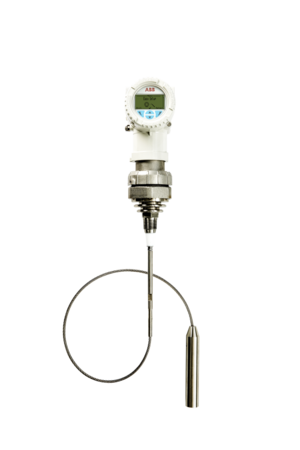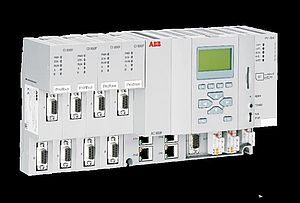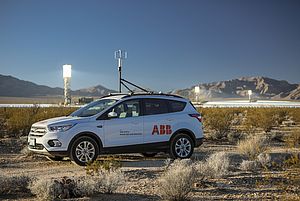The release of the Field Device Integration (FDI) specification means that instrument and automation manufacturers now have a solution for integrating field devices with the multitude of networks, operating systems and control systems used in the process industries. Furthermore, FDI introduces compatible products and host systems for managing field devices.
Today’s field devices look increasingly like embedded computers: intelligent, micro-processor-based devices deployed across a wide choice of networks offering a broad range of data that has never been available before. Increased data creates an information management dilemma. How do you take the storm of data created by intelligent field devices and turn it into actionable information?
The first step is to simplify the procedures needed to access field device information by higher-level control or host systems. These procedures, known as integration, must be completed to assure proper field device management by the host including device configuration, replacement, maintenance and diagnostics. They must be standardized, usable across all systems, independent of device suppliers, system suppliers or vendor specific tools.
For ABB, FDI is the key technology to overcome the ever-repeating efforts for integrating field devices into control systems and asset optimization tools. It helps end users to take advantage of devices’ functionality more effectively and efficiently than ever before.
For the user, the specification combines the attributes of competing device integration technologies: EDL and FDT/DTM. A key objective of the specification is to combine the simplicity of the text-based DD technology with the flexibility of specialized Windows-based FDT features and complex graphical representation.
Fieldbus device management tools
Today, more than 30 open and proprietary communication protocols serve industrial/process automation, with 90 percent using just three - HART, PROFIBUS and FOUNDATION Fieldbus. It is these three protocols which offer the most benefits for improving and optimizing plant operations and enterprise asset management. With their potential to improve processes, these protocols play a key role in maintenance and upkeep of field instruments. The tools for commissioning, calibrating, diagnosing, and maintaining these instruments must be capable of taking full advantage of the fieldbus communication protocols.
Furthermore, the tools must use these advantages in the simplest possible way, keeping the end user in mind.
Usually, there is more than one user type operating these tools at a single plant location. For instance, an instrument service technician diagnosing a device needs online communication with that device. A commissioning engineer may want to first configure the device offline and then download the data to the device. Instrument and maintenance engineers need to access an overview of the device’s health. The management tool for the field device, therefore, needs to simultaneously and simply serve all these users.
Key end-user isues
Most process automation manufacturers have their own tools for managing field devices. The same device may have different device drivers for different tools. Yet, despite standardization the device drivers supplied for one system often do not function, look and feel the same way in other systems. This means that the user needs to maintain different drivers for the various tools for the same underlying device. This is also a problem for instrumentation manufacturers as they must execute tests of their device drivers with multiple device management tools. The reasons for this are that each host fits a device description into its own user interface architecture. Also, each device manufacturer has its own understanding about what tool parameters are important for a user. FDI has undertaken activities that, to a large extent, minimize these inconsistencies.
FDI package
The FDI package serves all devices and tools. Each device comes with an FDI package used by all the tools or systems, including standalone PCs, field instruments, and process control and automation systems. The FDI device package makes sure all device management tools function with devices without any issues, regardless of the manufacturer. Each host interprets a device driver slightly differently to fit into the layout of its user interface (UI) layout.
Common Host Components
Device vendors typically design their driver for one preferred tool. Although the driver may adapt to the other tools, most often it does so imperfectly. Specifications and recommendations from the manufacturer don’t solve these issues, leading to the FDI’s biggest strength: Common Host Components.
The Common Host Components consist of the ED Engine and the UI Engine. All FDI device packages are tested and approved with reference to the FDI reference host containing the Common Host Components. These components will be available for implementation to host system manufacturers for their tools.
The use of Common Host Components ensures that the representation of the FDI package is similar in various tools. Importantly, since the device package developers will use the FDI reference host during product development, the representation of graphs, images, text, etc. in the device package will be highly optimized as desired by the instrument vendor. Instrument and host system manufacturers will not need to test their device drivers in various tools.
User interface design
A usability style guide documents several aspects of user interface design. The guide provides examples of source code or sketches of the graphical representation of controls or frames. It also standardizes labels. For example, entry level menus like Device Settings, Diagnostics, Operate and Action become labels like “Apply”, “Cancel”, “Next”, etc.
The guide documents translations in key languages (German, French, Spanish, Italian, Chinese, Portuguese, Japanese and Russian). In addition, the FDI packages will be based on the harmonized EDL applicable for all the three major protocols: HART, PROFIBUS and FOUNDATION Fieldbus. All new EDs must use the updated and optimized IEC 61804-3 standard. The “User Views” concept and harmonization of EDL have been key requirements from the User Association of Automation Technology in Process Industries (NAMUR).
Locked valuable device information
In the initial life cycle of a plant, most users are content with employing the device information within the tool. Sooner or later, however, they get into situations where the valuable information from the device needs to be made available to external tools or systems. They may need to analyze the field device conditions, failures, and calibration data or they just think that another specialized tool would benefit from access to a device.
Most device management tools do not allow transparent and easy access to this valuable information. Even if the tool does allow access, a complex series of steps or additional hardware/software may be required. Technologies like OPC-Unified Architecture (UA) play an effective role in easily opening this information to third party tools. The use of the standard interface OPC-UA in FDI hosts allows easy access from other applications.
- Applications can be designed and developed without any support of the supplier of the FDI host
- OPC -UA services supported by the FDI server allow safe and secure access to the device or to stored offline data
- Generic OPC-UA clients can be maintenance tools or Manufacturing Execution Systems (MES) or Enterprise Resource Planning (ERP) systems.
Not all existing devices will have FDI packages immediately. It will take some time before a sizeable number of FDI device packages are available in the market. But users need not worry since FDI will support existing device drivers.


